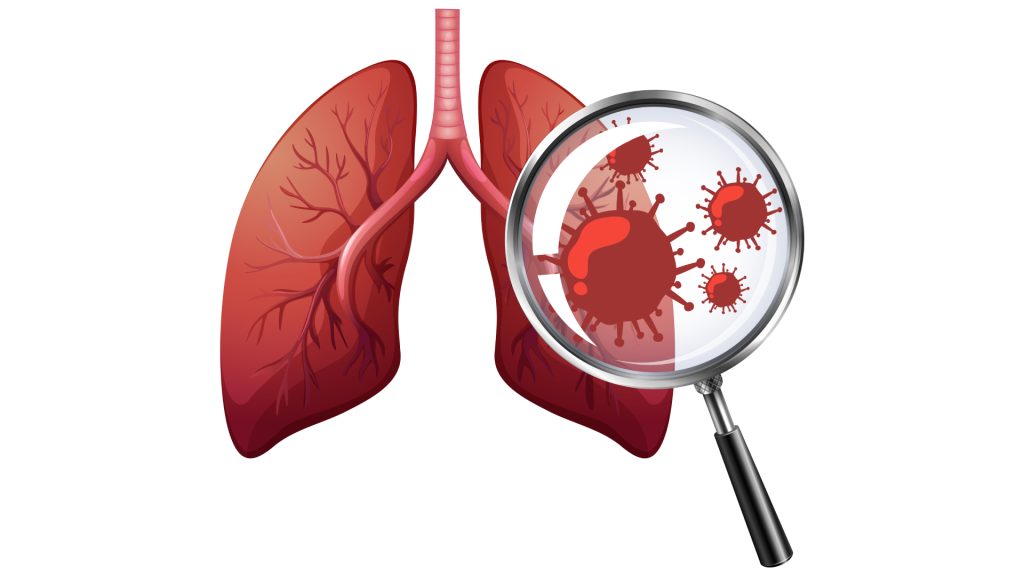- CANCER HELPLINE: 1800-22-1951
- 91 7317418888
- contact@drharshatreya.com
- CANCER HELPLINE: 1800-22-1951
carousel-slider domain was triggered too early. This is usually an indicator for some code in the plugin or theme running too early. Translations should be loaded at the init action or later. Please see Debugging in WordPress for more information. (This message was added in version 6.7.0.) in /home/locaqain/public_html/drharshatreya/wp-includes/functions.php on line 6121
Lung cancer is a serious disease that begins in the lungs, two vital organs in the chest responsible for supplying oxygen to the body and expelling carbon dioxide. It occurs when cells in the lung tissue grow uncontrollably, forming a tumor that can interfere with normal lung function. If not detected and treated early, these abnormal cells can spread (metastasize) to other parts of the body. Lung cancer is a leading cause of cancer-related deaths worldwide, partly because it is often diagnosed at an advanced stage.
The disease is categorized into two primary types: Non-Small Cell Lung Cancer (NSCLC) and Small Cell Lung Cancer (SCLC). NSCLC is the most common form, accounting for about 85% of cases, and includes subtypes like adenocarcinoma, squamous cell carcinoma, and large cell carcinoma. On the other hand, SCLC is less common but grows and spreads more rapidly, making it particularly aggressive. Smoking remains the primary cause of lung cancer, linked to approximately 85% of cases. However, non-smokers can also develop lung cancer due to factors such as prolonged exposure to secondhand smoke, air pollution, radon gas, or carcinogens like asbestos. Genetic predisposition also plays a role in some cases.
Symptoms of lung cancer often appear only when the disease has progressed. These may include persistent coughing, chest pain, difficulty breathing, unexplained weight loss, fatigue, and coughing up blood. Due to the subtle nature of early symptoms, many cases are diagnosed at advanced stages, making early detection challenging. Diagnosis typically involves imaging tests like X-rays or CT scans, followed by biopsy and molecular testing.
Treatment depends on the type, stage, and overall health of the patient. Common options include surgery, chemotherapy, radiation therapy, targeted drugs, and immunotherapy. Preventive measures like quitting smoking, reducing exposure to harmful substances, and undergoing regular health screenings are essential for reducing the risk of lung cancer. Early detection improves treatment outcomes, underscoring the importance of awareness and regular medical check-ups.
Diagnosing lung cancer usually involves a combination of imaging tests, biopsies, and lab analyses:
Imaging Tests:
Chest X-Ray: Initial screening to detect abnormal masses or nodules.
CT Scan: Provides detailed cross-sectional images of the lungs, helping to pinpoint abnormalities.
PET Scan: Detects metabolic activity and identifies cancerous areas in the body.
Biopsy: If imaging shows a suspicious area, a tissue sample is collected for analysis.
Bronchoscopy: A thin tube is passed through the mouth into the lungs to collect samples.
Needle Biopsy: A needle is inserted through the chest wall to access the tumor.
Surgical Biopsy: In some cases, surgery is required to obtain a sample.
Molecular Testing: Identifies specific mutations or genetic markers in tumor cells. This information helps doctors select targeted therapies.
The treatment approach depends on the type, stage, and overall health of the patient:
Surgery: Often used in early-stage NSCLC, with the aim of removing the tumor.
Lobectomy: Removal of one lobe of the lung.
Pneumonectomy: Removal of an entire lung.
Segmentectomy: Removal of a small part of the lung if the tumor is small.
Radiation Therapy: Uses high-energy beams to kill cancer cells.
External Beam Radiation: Targets cancer cells from outside the body.
Brachytherapy: Places radioactive materials near the cancer cells internally.
Targeted Therapy: Focuses on specific proteins or mutations in cancer cells.
Common targeted therapies include EGFR inhibitors (e.g., erlotinib) and ALK inhibitors (e.g., crizotinib).
Immunotherapy: Boosts the immune system to fight cancer cells.
Drugs like pembrolizumab and nivolumab are approved for advanced lung cancer.
Palliative Care: Provides relief from symptoms, improving the quality of life. It’s often used alongside other treatments to help manage pain, breathing difficulties, and other symptoms.
© 2024 Harshvardhan Atreya. All Rights Reserved.